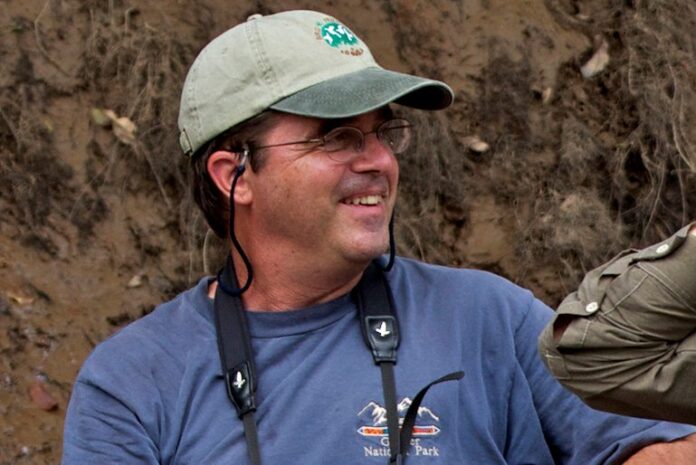Jeff Walters has dedicated much of the last 40 years to the study of red-cockaded woodpeckers, their cooperative breeding behaviors, and their habitats. Because of his research and its impact on conservation, a species once on the endangered list is now being down-listed and Walters’ work has been recognized with the prestigious Golden Goose Award.
“I’m a behavioral ecologist, so I study why animals do what they do,” said Walters, the Harold H. Bailey Professor of Biological Sciences in the College of Science. “It started out as basic research, and then some results had implications for conservation and eventually led to the recovery of the bird.”
This is precisely what the Golden Goose Award recognizes, researchers whose seemingly obscure, federally funded research led to major breakthroughs in their fields. Walters and others were honored at the 13th annual ceremony in Washington, D.C., where members of Congress spoke to the importance of the award and of federal funding of scientific research.
Beginning in the 1980s, Walters studied cooperative breeding among red-cockaded woodpeckers. Some of the young birds stay at home to help raise other youngsters as opposed to leaving to look for their own territories to start a home. These “helpers” may eventually inherit the breeding position. These birds, Walters discovered, fared better than those who left the family territory.
 Red-cockaded woodpeckers make their homes in cavities made in older pine trees. Walters said it takes woodpeckers years to make these cavities, so every family group has several complete cavities in various stages of construction.
Red-cockaded woodpeckers make their homes in cavities made in older pine trees. Walters said it takes woodpeckers years to make these cavities, so every family group has several complete cavities in various stages of construction.
That gave Walters an idea. Would the birds rather use a pre-made nesting cavity or start fresh in open forest? “Maybe if you make cavities for them in unoccupied territory, you can increase the population because birds will move in,” Walters said.
Carole Copeyon, a graduate student on Walters’ team at the time, figured out how to use a drill to make a cavity in a living pine tree. They tested their theory on 20 experimental sites, and within two years, woodpeckers had moved into 19 out of 20 sites.
“That was the largest increase ever seen in a red-cockaded woodpecker population, so after that experiment was done, I wrote a paper suggesting that as a new management paradigm,” said Walters.
The National Science Foundation supported the idea with grant funding for additional research. While wildlife managers weren’t convinced this approach would work, the Department of Defense was willing to give it a try in hopes of reclaiming land that had been set aside as habitat for red-cockaded woodpeckers.
“The endangered species interfered with military training because there were restrictions,” Walters said. “Soldiers had to go around where the cavity trees were instead of through the area, so the military thought, ‘If we recover the bird, the restrictions will go away.’”
Walters created cavities in pine trees at Camp Lejeune, a Marine Corps base in North Carolina, and at Eglin Air Force Base in Florida in the early 1990s. Camp Lejeune started out with 26 woodpecker family groups, and now they have about 140. Eglin started out with 250 family groups, and now there are over 500.
Restrictions that hindered training are no longer necessary, and the U.S. Fish and Wildlife Services officially has adopted Walters’ approach to managing the red-cockaded woodpecker species.
This woodpecker — the males have a few red feathers on their heads — gets its name from a cockade, which is an ornament usually worn on a hat as a badge. It’s fitting that, as he approaches retirement, the restoration of the red-cockade woodpecker and recognition for his work with the Golden Goose Award could be viewed as a “feather in the cap” for Walters.
“I feel really good about this award that’s coming at the end of my career,” said Walters. “It really means a lot to me and brings everything together.”

